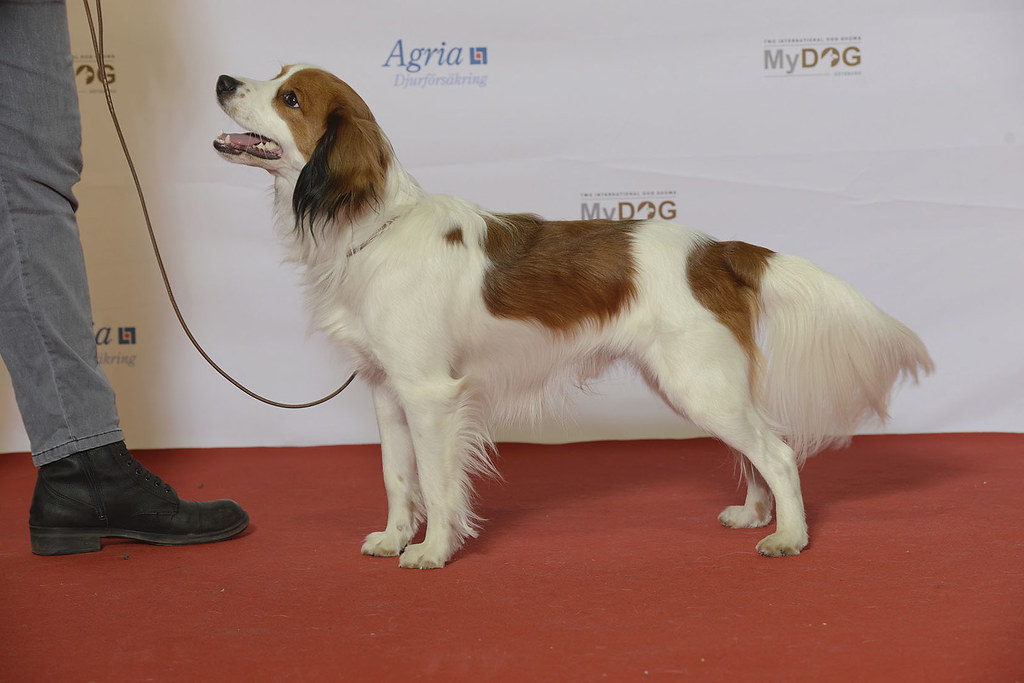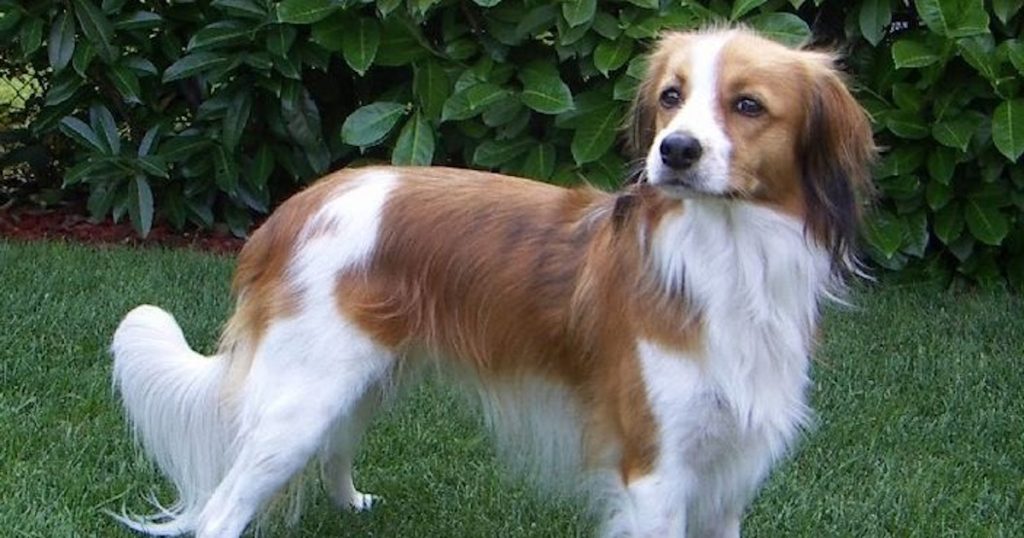Imagine a crisp morning in the Dutch countryside, where the distinct red and white coat of the Kooikerhondje catches the sun’s early rays, a picture of grace and utility. You might find yourself enchanted by this active little spaniel, a breed steeped in a rich history that masterfully balances a playful spirit with an endearing loyalty.
As a medium-sized dog, the Kooikerhondje carries a demeanor that’s as friendly with children as it is attentive during a hunt or agility challenge. They’re adaptable companions, but their unique needs and personality traits raise important considerations for potential owners.
As you weigh the possibility of welcoming a Kooikerhondje into your life, you must ponder not only the joys but also the responsibilities that come with this spirited canine. What awaits is a journey through the Kooikerhondje’s fascinating lineage, its endearing qualities, and the practicalities of day-to-day care, ensuring that your decision is as informed as it is heartfelt.
- Noise Level
- Energy
- Sociability
- Trainability
- Care
- Health
Overall
Summary
The Kooikerhondje is known for its moderate noise level, high energy, excellent sociability, and good trainability. They require moderate care and are generally healthy dogs.
Kooikerhondje: Traits, Temperament, and Care Guide
Delving into the Kooikerhondje’s traits and temperament, you’ll find that this breed’s adaptability and intelligence make it an excellent fit for various lifestyles, yet their care requires vigilant attention to prevent common health issues. As a member of the sporting breed group, the Nederlandse Kooikerhondje thrives on daily exercise and mental stimulation, which are critical to maintaining their overall well-being.
Their genetic health predispositions, such as hip dysplasia, eye problems, and Von Willebrand’s Disease, necessitate proactive veterinary care and screening.
Scientifically speaking, their plumed tail isn’t just a striking feature and an indicator of their alert and friendly nature. Effective training methods leveraging positive reinforcement ensure these energetic dogs remain obedient companions.
As you embrace this breed, you become part of a tradition steeped in Dutch heritage.
Exploring the Characteristics of the Kooikerhondje
Exploring the characteristics of the Kooikerhondje reveals a breed marked by a striking orange-red and white coat, reflecting their distinct aesthetics and historical role in Dutch duck hunting.
| Feature | Description | Relevance |
|---|---|---|
| Coat Color | White and orange, a signature of the Dutch Kooikerhondje. | Visual identification. |
| Historical Use | Originally bred for luring ducks into traps; decoy dogs. | Defines breed’s purpose. |
| Athleticism | Suited for agility, necessitates physical exercise and mental stimulation. | Health and temperament. |
| Health Risks | Prone to hip dysplasia, eye problems, among others. | Considerations for care. |
| Temperament & Sociality | Pleasant at home, loyal, wary of strangers, good with pets after socialization. | Family and social dynamics. |
Analyzing these details will help you appreciate the breed’s Spaniel heritage, intrinsic to its agility and responsiveness.
Kooikerhondje: A Comprehensive Profile and Guide
You’ll find that the Kooikerhondje embodies a distinctive blend of traits, from its historical role in duck hunting to its modern-day adaptability as a companion dog.
As you explore this comprehensive profile, consider the breed’s genetic predispositions and how they might influence your approach to health screenings and preventive care.
Understanding the nuanced dietary needs and exercise requirements will be crucial in maintaining the Kooikerhondje’s overall well-being and longevity.
Everything You Need to Know
Understanding the Kooikerhondje requires an appreciation of its Dutch heritage. This small, sporting breed possesses unique characteristics that make it both an adaptable pet and a competent participant in agility sports.
Here’s what you need to know:
- Dutch Tradition: Originally bred to hunt ducks, the Kooikerhondje’s nimble and alert nature made it ideal for luring ducks into traps—a method known as ‘eendenkooi.’
- Club Affiliation: The Kooikerhondje Club provides resources and support for breed lovers, promoting responsible breeding practices and community among owners.
- Health Vigilance: Though generally healthy, they’re prone to specific health issues that require vigilant monitoring, including hip and elbow dysplasia, as well as certain eye conditions and autoimmune disorders.
As you consider this breed, think of the Kooikerhondje as more than just a pet; it’s a living link to a rich Dutch tradition of duck hunting and a testament to canine agility and companionship.

Discovering the Temperament
Delving into the temperament of the Kooikerhondje reveals a breed that’s both alert and eager to please, reflecting its history as a skilled working dog adept at luring ducks into traps. This dog breed, characterized by the Dutch Kennel Club as cheerful and intelligent, thrives on exercise and mental stimulation. To maintain a happy and healthy demeanor, daily physical activity is essential.
While the Kooikerhondje is amiable, it can exhibit initial caution around strangers. However, familiarity breeds trust, integral to forging a strong bond. Their rich history, dating back to the 16th century and depicted in Jan Steen’s paintings, underscores the breed’s resilience.
Vigilance in diet and health monitoring is critical, especially regarding potential ear infections, ensuring your Kooikerhondje leads a robust, fulfilling life.
Kooikerhondje: Is It a Good Fit for Families?
When you consider a Kooikerhondje for your family, you’re looking at a sociable and vigilant breed, potentially an ideal match for an active household.
Their high intelligence and trainability suggest they can integrate well with family dynamics, including those with children, provided they receive consistent training and socialization.
However, you must also factor in their grooming needs and potential health risks, ensuring you’re equipped for long-term care and regular veterinary visits.
Assessing Kooikerhondje’s Compatibility with Families and Kids
Evaluating Kooikerhondje’s role in family dynamics reveals that their pleasant and friendly disposition aligns well with the needs of household members, particularly those with children. If you’re considering a Kooikerhondje as a family companion, consider the following aspects:
- Activity Level: Kooikerhondjes have a moderate to high activity level, meaning they’ll need daily play sessions and regular exercise to stay healthy and content.
- Mental and Physical Needs: They’re intelligent dogs that thrive on mental and physical stimulation, which benefits families that enjoy interactive and engaging activities.
- Family Fit: Their temperament makes them a good fit for families, as they generally exhibit patience and a playful attitude that matches kids’ energy.
Kooikerhondje Adjusting to Environments
With their adaptable nature, Kooikerhondjes can thrive in diverse environments ranging from cozy apartments to spacious homes, provided they receive adequate exercise and mental engagement. Recognized by the Foundation Stock Service and the Raad van Beheer, their versatility makes them an excellent apartment dog for those who provide enough daily physical exercise and mental stimulation. Without it, they’re prone to put on weight.
Your Kooikerhondje’s ability to adjust is impressive. They can handle solitude for reasonable periods, suiting owners with demanding schedules. Weather extremes, too, are rarely an issue, thanks to their resilience to both chill and heat. Remember, though rare outside their homeland, proper socialization and training are crucial in helping them adapt smoothly to the varying dynamics of new environments.

Kooikerhondje Obedience Essentials
As you train your Kooikerhondje, you must employ strategies that leverage their high intelligence and eagerness to learn. Consistent, positive reinforcement techniques will establish a strong foundation for obedience and mitigate potential leash reactivity noted in the breed.
Tailoring exercises to provide both physical exertion and cognitive challenges will ensure your Kooikerhondje’s compliance and overall well-being.
Effective Training Strategies
To effectively train a Kooikerhondje, it’s crucial to employ positive reinforcement techniques that capitalize on their intelligence and eagerness to please. This Dutch dog breed, part of the sporting group, thrives when training aligns with its need to be mentally and physically engaged. Consistency and patience form the backbone of effective training strategies, ensuring clear communication and expectation setting.
Here’s a detailed guide to help you connect with your Kooikerhondje:
| Strategy | Description | Benefit |
|---|---|---|
| Positive Reinforcement | Rewards for desired behavior | Enhances eagerness to please |
| Early Socialization | Exposure to diverse stimuli | Promotes confidence and good behavior |
| Consistent Routine | Clear rules and regular training sessions | Fosters understanding and responsiveness |
| Mental Stimulation | Interactive play and puzzles | Prevents boredom, supports mental health |
Exercise and Grooming Needs
Ensuring your Kooikerhondje engages in daily physical activity, such as brisk walks or interactive play, is crucial for maintaining vigor and mental health. The breed’s exercise and grooming needs are significant; they necessitate regular, vigorous workouts to channel their high energy and athletic prowess.
Mental stimulation, through structured dog sports, can prevent boredom and promote cognitive well-being.
Grooming is equally vital, especially for their silky coat, which requires weekly brushing to manage shedding and maintain its luster. Monitoring for signs of a clotting disorder during grooming is prudent, as blood clotting issues could present a problem during nail trimming or if injuries occur.
Dental care is non-negotiable for long-term health. Adhering to these care guidelines ensures your Kooikerhondje remains a joyful and integral family member.
Health Considerations
Considering a Kooikerhondje, you must know their potential health challenges, including hip and elbow dysplasia. These conditions and hereditary eye issues can significantly impact their quality of life and longevity.
Proactive health screenings and a robust preventive care plan are vital to detecting and managing these issues early, extending your Kooikerhondje’s lifespan.
Common Health Issues and Lifespan
While Kooikerhondjes typically enjoy a healthy lifespan of 12 to 13 years, they’re predisposed to certain hereditary conditions such as hip and elbow dysplasia, various eye disorders, Von Willebrand’s disease, and patellar luxation. This breed, gaining popularity in the United States, may also face autoimmune disorders like thyroiditis and immune-mediated hemolytic anemia. A disorder that causes such autoimmune reactions requires vigilant care and prompt medical attention.
To safeguard their health and extend their common health issues and lifespan, it’s critical to provide a balanced diet and manage their high-energy needs with daily exercise and mental stimulation. Since being officially recognized, the Kooikerhondje’s well-being has been a focal point in the development of the Nova, underscoring the community’s dedication to nurturing this spirited breed.
Is Kooikerhondje the Right Dog for You?
Considering the Kooikerhondje’s adaptability to apartment living and need for regular exercise, you should evaluate your lifestyle to determine if this energetic and intelligent breed aligns with your daily routine and living situation.
Originating from the Hardenbroek van Ammerstol estate, the Kooikerhondje, an official breed in the dog world, once excelled in waterfowl hunting as a skilled duck decoy. Today, this sporting dog thrives in environments where it can channel its instinctual drive and intelligence into structured activities.
If you’re seeking a dog breed that integrates into the family as a loving companion yet remains alert and responsive, the Kooikerhondje might be the perfect addition.
However, remember their susceptibility to certain health conditions; providing consistent care and regular health screenings is imperative to ensure their well-being.
Conclusion
The Kooikerhondje encapsulates a perfect blend of vivacity and companionship, ideally suited to active family life.
The breed’s inherent agility and sociable nature align with the increasing trend towards multifaceted pets that offer emotional bonds and physical engagement.
Detailed analysis suggests regular grooming, exercise, and proactive health management are critical for their well-being.
Thus, for those seeking an intelligent, versatile companion, the Kooikerhondje emerges as an exemplary choice.
